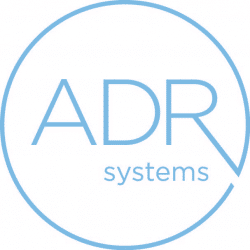A step clause—also known as a multi-step or multi-tiered dispute resolution clause—provides for negotiation or mediation prior to arbitration or litigation. By adding a step clause into a contract, parties write themselves into an alternative dispute resolution (ADR) protocol prior to any dispute, thereby heading off conflict before it escalates and avoiding the costs, delays, uncertainty and publicity of litigation.
Step clauses, therefore, help parties manage the trajectory of future disputes; however, they are only as useful as they are specific. Specificity benefits the parties practically, minimizing procedural ambiguity, but also, in certain circumstances, legally, as we will explain below. To manage future disputes and maximize the intended benefits of ADR processes, counsel should draft step clauses in ways that decide how the parties will mediate and arbitrate their dispute before it arises. When drafting a step clause, counsel should consider the following:
Timeline
ADR processes benefit parties when they are expedient. In our own model step clause, ADR Systems stipulates that “parties shall make best efforts … in selecting the mediator and the date of the mediation session” within 14 days of initiation of mediation and that “the mediation session must occur within 60 days of initiation of the mediation.” These timelines give objective, measurable standards “by which compliance can be measured,” helping, in certain circumstances, arguments for the enforceability of a step clause[1]
“Condition Precedent” Phrasing
Counsel should strive to make it perfectly clear that mediation functions as a condition precedent to arbitration. For any number of reasons, one party may wish to proceed directly to arbitration or, even, litigate their dispute despite the step clause in a contract. Like exact timelines, stating explicitly that mediation is a condition precedent to arbitration demonstrates the intention of the parties. Moreover, like clear timelines, it can also bolster the clause’s enforceability of and undermine any attempts to avoid the ADR process set forth in the step clause later[2]
ADR Provider
Perhaps the most important decision that counsel can make when writing a step clause is deciding where the parties will mediate and arbitrate any future disputes. When parties write an ADR provider like ADR Systems into their step clause, they avail themselves of a case management structure, mediation- and arbitration-related resources and a reputable panel of neutrals that can help them resolve their dispute expeditiously. ADR Systems’ model step clause writes us into contracts in simple language that we make available for you to directly copy and paste
Neutral Qualifications
Parties can choose their neutral when they privately mediate and/or arbitrate a dispute. After writing an ADR provider like ADR Systems into their step clause, parties may expedite any future neutral-selection process by setting forth in the step clause certain preferences for a neutral, such as specific subject-matter experience, or a method by which parties will select that neutral, such as via a strike list. By doing so, counsel can avoid these conversations and debates later and move more quickly toward the mediation session ahead
Scope
Parties should determine the scope of the step clause’s applicability to future disputes that may derive from a contract. ADR Systems’ model step clause is intentionally broad in its scope: “The parties agree that any disputes, claims, or controversies arising out of or relating to this contract, or the breach, enforcement or validity thereof, shall be submitted to mediation … and if the matter is not resolved through mediation, then it shall be submitted to binding arbitration.” Parties may narrow this language as needed to suit their purposes
Thoroughly drafted step clauses demonstrate circumspection and foresight. With dispute resolution processes in place before a dispute arises, parties are primed to save time, money and stress. Moreover, they avoid having these important conversations in the future when they may be colored by newfangled conflict.
A step clause is a road map, and the best maps are well marked. Counsel can reference ADR Systems’ model step clauses and learn about our neutrals’ thoughts on the use of step clauses in commercial contracts.
ADR Systems, It’s Settled. ®
…………
Works Cited:
[1] File, D Jason. “United States: Multi-Step Dispute Resolution Clauses,” International Bar Association Legal
Practice Division, Mediation Committee Newsletter, July 2007
[2] Ibid.





